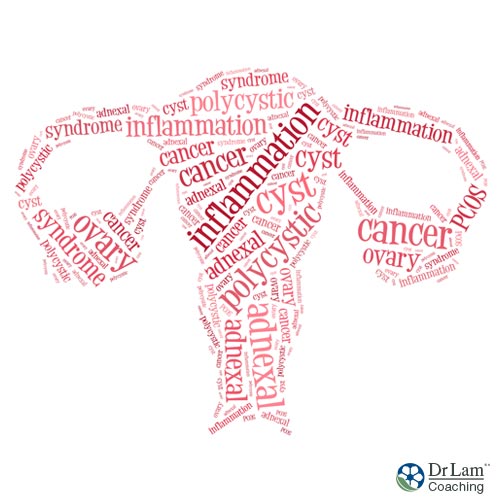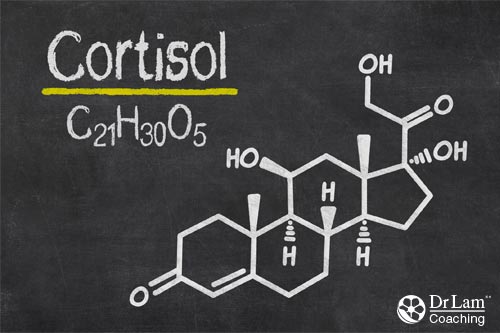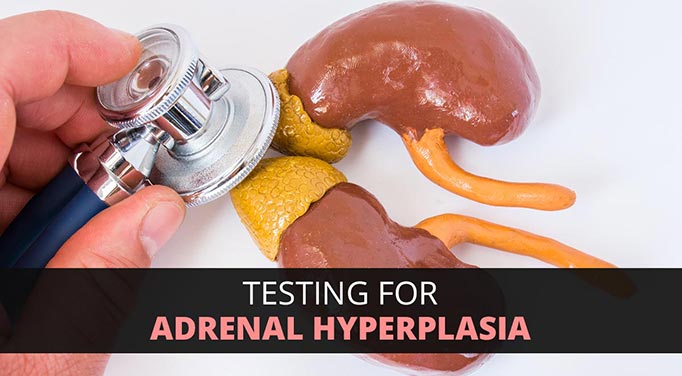 Polycystic ovary syndrome, or PCOS, comes with a constellation of symptoms that is similar to both congenital adrenal hyperplasia and non-classical congenital adrenal hyperplasia. These similarities make it difficult to assess people with them correctly.
Polycystic ovary syndrome, or PCOS, comes with a constellation of symptoms that is similar to both congenital adrenal hyperplasia and non-classical congenital adrenal hyperplasia. These similarities make it difficult to assess people with them correctly.
PCOS consists of two major factors: chronic anovulation, or non-production of eggs, and high levels of androgen. The lack of egg production and the possible lack of menstruation cause difficulties in the menstrual cycle. At the same time, high levels of androgen can cause symptoms such as more facial hair, sideburns, hair in the middle of the female chest, and male-pattern baldness. Acne over the back and on the face is also a result of excess androgens.
One way to determine whether PCOS is present is to perform an ultrasound to detect multiple cysts on the ovaries.
High insulin levels may be present in both conditions. The increased androgens may be responsible for these high levels in the ovaries. As with adrenal hyperplasia, women with PCOS often also have hypertension and obesity. One way to confirm the presence of high insulin levels is the darkening of the folds of skin around the neck, called acanthosis nigricans.
The most common form of CAH, a deficiency in 21-hydroxylase, causes increased androgen production in the womb. Female babies with this condition may appear more masculine at birth due to ambiguous genitalia, including an enlarged clitoris.
Baby boys will likely not show significant symptoms at birth, but the lower levels of aldosterone that can lead to a loss of salt is a condition that causes great concern. Potentially, babies with this issue can go into shock a week or two after birth, with very low sodium and very high potassium levels.
One of the differences between PCOS and CAH is in the location where the excess androgens, which ultimately convert into testosterone, are produced. In PCOS, the ovaries are the location for this excess. In CAH, the adrenals produce the excess androgen.
In all three conditions mentioned in this article, congenital adrenal hyperplasia, PCOS, and AFS, insulin and insulin resistance are important factors. What is the importance of insulin in these conditions?
Under normal conditions, insulin controls excess glucose in your blood, guiding it into your cells for energy production. When stress hits, your sensitivity to glucose lessens, leaving more glucose in your bloodstream. This is due to your body’s response to the stress, a biological attempt to either fight against or flee from whatever is stressing you.
Normally, this is an occurrence of short duration. But when stress continues, insulin resistance keeps more sugar in your blood. One result can be the type of symptoms seen in both PCOS and AFS, such as increased estrogen and testosterone, decreased ability to digest food, reduced sex hormone binding globulin in women, and decreased fertility.
Continuing stress also can lead to a roller coaster effect with increased levels of blood glucose leading to increased insulin levels in the blood to counter it. These increased levels of insulin lead to too little glucose in your blood, resulting in a downturn in your energy, usually in the middle of the afternoon. Typically in women with PCOS, this means foggy thinking, feeling grumpy, and having sugar cravings at that time of day.
These are also typical symptoms for anyone with AFS.
At the times when your blood glucose levels drop, your body releases adrenaline. This stresses your adrenal glands and pushes more glucose from your cells into your bloodstream. For short-term stresses, this system works well. But when stress continues, it begins taking a toll, leading to adrenal fatigue.
The relationship between CAH and AFS stems from the hormone ACTH and its action on cortisol. Normally, the adrenal glands are stimulated by ACTH from the pituitary to produce the precursors of cortisol, the stress-fighting hormone. 
Through a feedback system, the level of cortisol in the bloodstream will eventually reduce the release of ACTH, keeping an appropriate balance in play. Lower levels of ACTH takes the pressure off of the adrenal glands to produce cortisol.
In people with CAH, the level of cortisol does not increase in the bloodstream, thus keeping ACTH high and the adrenal glands continually stimulated. The process that converts precursors into cortisol is blocked in CAH. The result is continuing stimulation of the adrenals, ultimately leading to adrenal fatigue. If stress is added into this mix, the adrenals are bombarded with the need to produce cortisol.
A build-up of the precursors to cortisol results when the process of converting them is blocked. One of these precursors is testosterone, which brings on male characteristics seen in people with adrenal hyperplasia. With the levels of these precursors rising, some leaks into the bloodstream, causing other symptoms found in people with CAH.
Blocking this process of converting precursors into cortisol can lead to a reduction of aldosterone in the blood. This can lead to the serious condition of too little salt in the bloodstream.
As with other conditions, typical medical assessments don’t always identify CAH or NCAH as the conditions underlying symptoms. In order to fully assess and more effectively remediate the condition, specific tests are needed.
While it is true that a deficiency in 21-hydroxylase is the main cause of CAH, it is not the only possible cause. It’s important to determine which of the steps in the three pathways for producing the steroids involved are blocked. This means other markers should also be assessed. There are subtle changes in the steroids that have to be evaluated, so sensitivity in the tests administered is vital.
Each of the steroids involved is based on cholesterol. Each one either adds or takes away a small factor in order to complete its product. One may add a hydrogen to an oxygen group. Another may remove an oxygen from a hydrogen group. Another may add a hydroxyl group. Each of these changes is subtle but leads to a very different hormone response.
 Rather than a single test for 17-hydroxyprogesterone, a panel of tests to be more specific may be best. The single test is adequate for determining the presence of a lack of 21-hydroxylase, but not adequate if other factors are involved, for example, a 3-beta-hydroxysteroid deficit.
Rather than a single test for 17-hydroxyprogesterone, a panel of tests to be more specific may be best. The single test is adequate for determining the presence of a lack of 21-hydroxylase, but not adequate if other factors are involved, for example, a 3-beta-hydroxysteroid deficit.
The panel of tests can differentiate CAH from PCOS, and if the CAH is actually NCAH. With NCAH, there will be results that show a partial defect in 21-hydroxylase. Symptoms from the lack of cortisol, a marker for NCAH, would be similar to those seen in PCOS.
If NCAH is suspected, there are some specific tests for this condition. One is to measure 17-OHP. This is accomplished with a single morning blood draw to measure steroid levels of 17-hydroxyprogesterone, androstenedione, and testosterone.
Studies have shown lower testosterone levels in most women, with higher levels of androstenedione. Clinical results have shown elevated 17-OHP levels over 200 ng/dl strongly indicates the presence of NCAH, if the blood is drawn in the early follicular phase of the menstrual cycle.
To confirm this suspicion, an ACTH stimulation test can be performed. Blood is drawn prior to giving an intravenous dose of ACTH, then drawn again an hour after. People who do not have CAH will show increased cortisol in their bloodstream. Those with NCAH will show high levels of 17-OHP, a precursor from which cortisol is made. These levels can be compared with standardized tables to complete the assessment.
Another marker for the presence of NCAH is higher levels of deoxycorticosterone and 11-deoxycortisol. If these levels are high in the blood, they suggest NCAH due to a deficiency in 11beta-hydroxylase.
These levels will be elevated because 11beta-hydroxylase converts deoxycorticosterone to corticosterone which is a precursor to aldosterone. It also converts 11-deoxycortisol to cortisol.
If the NCAH is due to a deficiency in 11beta-hydroxylase, these symptoms will be present: hypertension and excess androgen. The hypertension is due to monogenic, low renin with low aldosterone levels.
© Copyright 2018 Michael Lam, M.D. All Rights Reserved.

